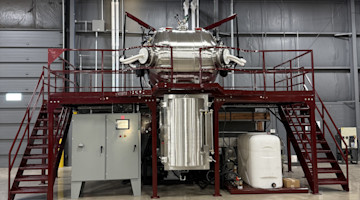According to recent research from consulting firm McKinsey & Co., not only is it tough to find talent for manufacturing jobs, but it is becoming even more expensive – which may validate what you’ve probably been experiencing.
And it isn’t going to get any better. The consultancy reports that when it comes to skilled workers in manufacturing, “from 2022 to 2032, annual hiring is expected to be more than 20 times the projected annual increase in net new jobs.”
Older workers are rapidly retiring from the workforce, and, according to McKinsey’s research, that issue is compounded because Generation Z (those born between 1997 and 2012) and many millennials (1981-1996) “prioritize workplace flexibility,” noting that “the on-site and highly structured nature of … manufacturing jobs typically doesn’t map to these preferences.”
Or, said another way: People can’t work from home when it comes to manufacturing jobs.
McKinsey found that, overall, acquiring and training skilled workers is going to cost companies in the United States some serious money – to the order of $5.3 billion a year.
A Solid Solution
An important solution to the problem, and one that is certainly able to shoulder a great deal of the burden of finding, training, and keeping good employees, is becoming clearer: Automation.
Automation enables companies to focus on their good people, allowing them to perform jobs that may be more engaging to them, offloading some of the more repetitive tasks to a robot. Engaged employees stick around. Those who are just punching the clock are simply doing just that.
A Generational Shift
Here’s a rather frightening fact: According to the U.S. Census Bureau, by 2030, every member of the baby-boom generation – which accounts for about a fifth of the overall population – will be 65 or order. Which could have a big impact on your staffing situation in the not-too-distant future. But between an aging workforce and automation lies the opportunity to grow the use of robots.
When it comes to robot density – the number of robots per 10,000 employees – the United States has a long way to go compared to other countries, suggests Ian Stringer, vice president of data strategy at AMT – The Association For Manufacturing Technology. In South Korea, there are 1,012 robots per 10,000 employees, the highest density in the world. The United States is 10th, with 285 robots per 10,000 employees – just edging out Slovenia, which has 284.
Stringer cites research conducted by MIT and the National Bureau of Economic Research that shows a correlation between an aging population and the deployment of robots, which could be good news for the United States on a national scale. In other words, South Korea, Germany, Japan, and other countries may have more robots per 10,000 employees, but that’s because their population is aging.
However, as Daron Acemoglu and Pascual Restrepo, authors of “Demographics and Automation,” write:
“We argue theoretically and document empirically that aging leads to greater (industrial) automation, and in particular, to more intensive use and development of robots. Using US data, we document that robots substitute for middle-aged workers (those between the ages of 36 and 55). We then show that demographic change—corresponding to an increasing ratio of older to middle-aged workers—is associated with greater adoption of robots and other automation technologies across countries.”
Not Getting Any Younger
According to 2023 numbers from the U.S. Bureau of Labor Statistics (BLS), in durable goods manufacturing, which has 10,065,000 total employees, most employees are 35 years old or older:
35-44: 2,155,000
45-54: 2,278,000
55-64: 2,057,000
65 and up: 566,000
That’s 7,056,000 employees in durable goods manufacturing who are in the middle-aged and above cohort – roughly 70% of the entire sector – which shows that there are evidently greater opportunities for more automation deployments.
So, at the level of an individual company, if there is a significant number of middle-aged workers, then there is a trend toward using more automation. Which means that if a company with that demographic cohort chooses not to use automation, it is likely to fall behind competitors that do. And if we go back to the relative disinterest of Gen Z and many millennials in working from, well, work, then there is another way to look at the BLS numbers of people in manufacturing, which also makes automation make sense:
16-19: 133,000
20-24: 722,000
25-34: 2,155,000
35-44: 2,155,000
While that is the number of people presently employed – a total of 5,165,000 – (1) there is apparently some increased degree of disinterest, particularly post-COVID, in staying at a job and (2) a growing demand for employees. Which goes to the point of keeping the solid employees you have on staff and increasing automation – because the number of people getting older isn’t declining.
Take It From the Top
What’s more, Stringer points out that there are advantages to operations using automation, and he references the Modern Machine Shop Top Shops survey conducted by Gardner Business Media (GBM).
Top Shops is an annual benchmarking survey, explains Dave Necessary, executive vice president, development, GBM. The current study is the 13th. Some 3,500 shops have participated. What Top Shops does is calculate the highest performers compared with other operations. The results are startling.
For example, while top shops average 80% capacity utilization, other shops average just 67%. Top shops achieve a 15% profit margin. Other shops? Five percent.
Necessary points out that the use of automation is not something indicative of all top shops, and that some other shops are deploying automation like collaborative robots (cobots). Still, the overall numbers in several categories indicate that automation is a salient characteristic of the shops that are able to achieve those solid returns and keep their operations consistently running. Fifty-one percent of top shops use robotic part loading, 16% more than other shops. The delta between the top shops and the others when it comes to lights-out operation is even greater: 68% to 48%.
The point is: Automation can measurably impact the productivity of a shop – and its profitability. Clearly important reasons to use it. But there is some trepidation.
Automate Now
Which brings us to Joe Campbell, a consultant who has been involved in robotics and automation for some 35 years. He’s worked with SCARA robots, 6-axis robots, and cobots.
“Twenty years ago, the only companies that were applying robots were big ones,” Campbell says. The reason why that was the case is simple: “They were too complicated and too expensive.” But that has significantly changed in terms of the technology – as has the need for the technology. “We found a lot of companies that couldn’t run their machines because they couldn’t get labor to load and unload them. So, you had a half-million dollar machine tool sitting idle because you couldn’t get production coming off of it,” he says. So, the shops that put automation on the equipment were able to “pick up the top line sales and bottom-line margin from the production of the machine.”
Or, he says, other operations may want to expand capacity but are, in effect, “landlocked” – they have no ability to physically expand the shop. While the lack of available labor is certainly an important consideration, Campbell says that an important focus today is not just on finding or keeping the right people but on getting productivity up. “If you automate, you can get a significant boost in raw capacity, raw output.”
Historically robots and other automation have proliferated in high-volume, low-mix operations like automotive.
But Campbell points out that in an increasing number of cases, high-mix, low-volume, more customization, and shorter product life-cycles all lend themselves to being addressed by automation that can be quickly deployed – and redeployed, like cobots.
Downtime is expensive. Arguably even unaffordable nowadays.
Back to the Start
According to a study released earlier this year by consultancy Deloitte and The Manufacturing Institute (MI), the U.S. manufacturing industry could need to fill as many as a net 3.8 million jobs between 2024 and 2033. Of those jobs, the ones specifically related to durable goods manufacturing include machinists and welders.
One finding should give all manufacturing managers pause: Employees are 2.7 times less likely to leave an organization during the next 12 months if they think they can acquire skills that will be necessary for the future. In other words, if an employee is doing a job that could be readily automated, i.e., where there’s no future for them, then they’re going to be more likely to leave.
Deloitte and MI calculate that of the 3.8 million job openings, 1.9 million could go unfilled unless manufacturers address the skills and applicant gaps. Campbell has a succinct observation about how this can be addressed by manufacturers: “Automation makes a facility a whole lot more attractive to a younger generation, so you can hire some people.”
Resolving this probably won’t be an insurmountable issue for top shops. But as for the other shops…
To read the rest of the Industry Outlook Issue of MT Magazine, click here.






